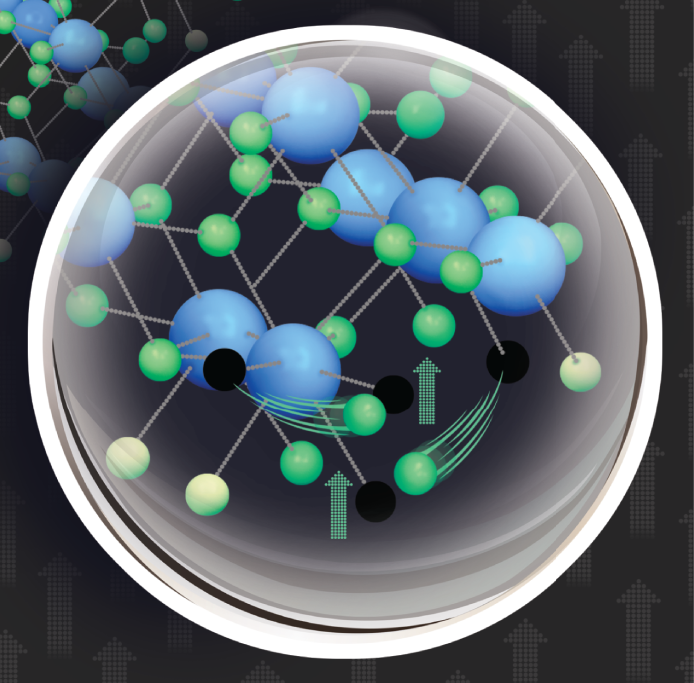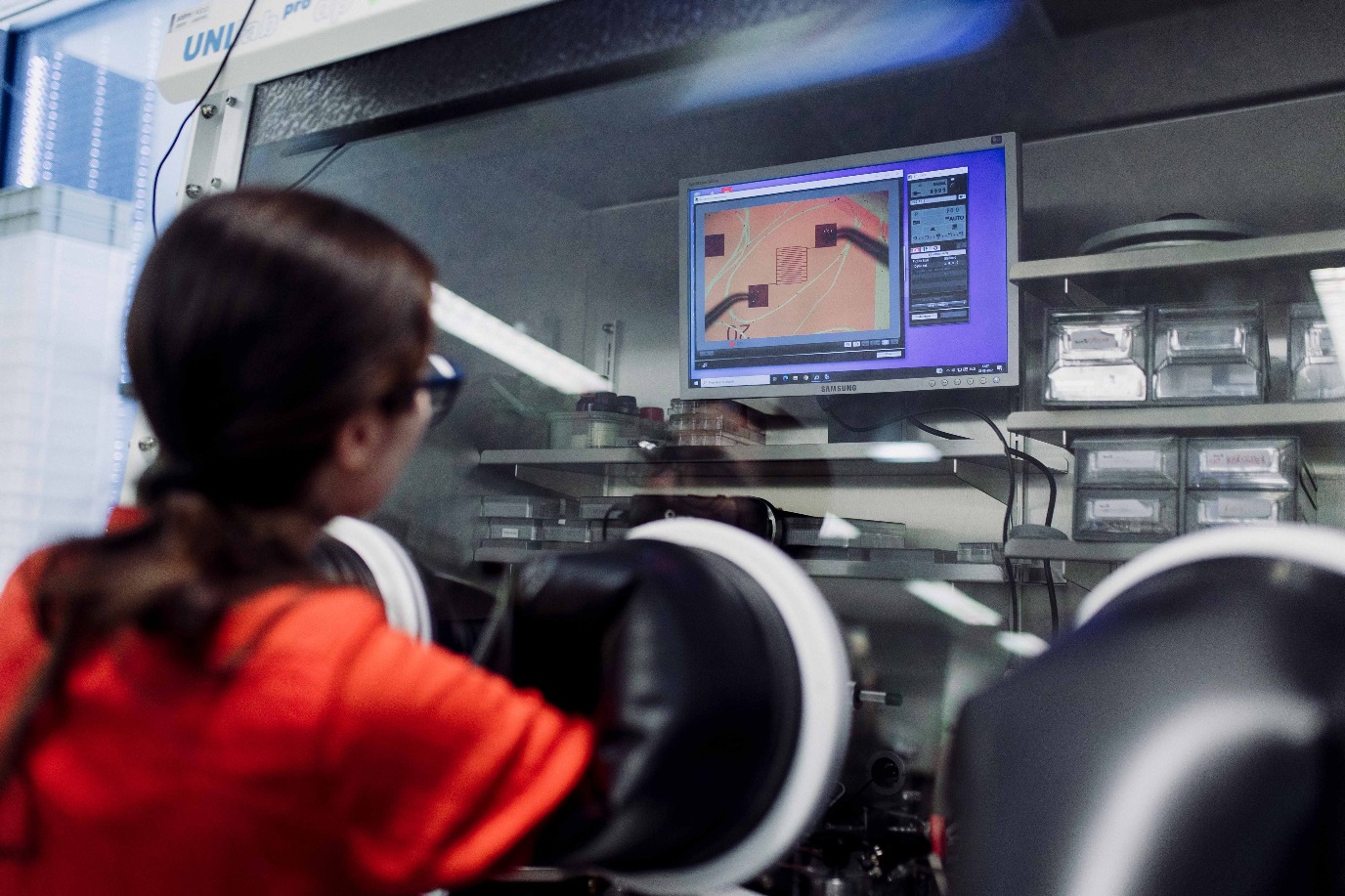New computing hardware needs a theoretical basis
There is an intense, worldwide search for novel materials to build computer microchips with that are not based on classic transistors but on much more energy-saving, brain-like components. However, whereas the theoretical basis for classic transistor-based digital computers is solid, there are no real theoretical guidelines for the creation of brain-like computers. Such a theory would be absolutely necessary to put the efforts that go into engineering new kinds of microchips on solid ground, argues Herbert Jaeger, Professor of Computing in Cognitive Materials at the University of Groningen.
FSE Science Newsroom | René Fransen
Computers have, so far, relied on stable switches that can be off or on, usually transistors. These digital computers are logical machines and their programming is also based on logical reasoning. For decades, computers have become more powerful by further miniaturization of the transistors, but this process is now approaching a physical limit. That is why scientists are working to find new materials to make more versatile switches, which could use more values than just the digitals 0 or 1.
(Text continues below the image)

Dangerous pitfall
Jaeger is part of the Groningen Cognitive Systems and Materials Center (CogniGron), which aims to develop neuromorphic (i.e. brain-like) computers. CogniGron is bringing together scientists who have very different approaches: experimental materials scientists and theoretical modelers from fields as diverse as mathematics, computer science, and AI. Working closely with materials scientists has given Jaeger a good idea of the challenges that they face when trying to come up with new computational materials, while it has also made him aware of a dangerous pitfall: there is no established theory for the use of non-digital physical effects in computing systems.
A lot of the information-processing that our brain does is this non-logical stuff
Our brain is not a logical system. We can reason logically, but that is only a small part of what our brain does. Most of the time, it must work out how to bring a hand to a teacup or wave to a colleague on passing them in a corridor. ‘A lot of the information-processing that our brain does is this non-logical stuff, which is continuous and dynamic. It is difficult to formalize this in a digital computer,’ explains Jaeger. Furthermore, our brains keep working despite fluctuations in blood pressure, external temperature, or hormone balance, and so on. How is it possible to create a computer that is as versatile and robust? Jaeger is optimistic: ‘The simple answer is: the brain is proof of principle that it can be done.’
(Text continues below the image)

Neuroscientists don’t know exactly how the brain works.
Neurons
The brain is, therefore, an inspiration for materials scientists. Jaeger: ‘They might produce something that is made from a few hundred atoms and that will oscillate, or something that will show bursts of activity. And they will say: “That looks like how neurons work, so let’s build a neural network.”’ But they are missing a vital bit of knowledge here. ‘Even neuroscientists don’t know exactly how the brain works. This is where the lack of a theory for neuromorphic computers is problematic. Yet, the field doesn’t appear to see this.’
In a paper published in Nature Communications on 16 August, Jaeger and his colleagues Beatriz Noheda (scientific director of CogniGron) and Wilfred G. van der Wiel (University of Twente) present a sketch of what a theory for non-digital computers might look like. They propose that instead of stable 0/1 switches, the theory should work with continuous, analogue signals. It should also accommodate the wealth of non-standard nanoscale physical effects that the materials scientists are investigating.
(Text continues below the image)

Sub-theories
Something else that Jaeger has learned from listening to materials scientists is that devices from these new materials are difficult to construct. Jaeger: ‘If you make a hundred of them, they will not all be identical.’ This is actually very brain-like, as our neurons are not all exactly identical either. Another possible issue is that the devices are often brittle and temperature-sensitive, continues Jaeger. ‘Any theory for neuromorphic computing should take such characteristics into account.’
Importantly, a theory underpinning neuromorphic computing will not be a single theory but will be constructed from many sub-theories (see image below). Jaeger: ‘This is in fact how digital computer theory works as well, it is a layered system of connected sub-theories.’ Creating such a theoretical description of neuromorphic computers will require close collaboration of experimental materials scientists and formal theoretical modellers. Jaeger: ‘Computer scientists must be aware of the physics of all these new materials and materials scientists should be aware of the fundamental concepts in computing.’
(Text continues below the image)

Blind spots
Bridging this divide between materials science, neuroscience, computing science, and engineering is exactly why CogniGron was founded at the University of Groningen: it brings these different groups together. ‘We all have our blind spots,’ concludes Jaeger. ‘And the biggest gap in our knowledge is a foundational theory for neuromorphic computing. Our paper is a first attempt at pointing out how such a theory could be constructed and how we can create a common language.’
Reference: Herbert Jaeger, Beatriz Noheda & Wilfred G. van der Wiel: Toward a formal theory for computing machines made out of whatever physics offers. Nature Communications, 16 August 2023
| Last modified: | 27 June 2024 3.47 p.m. |
More news
-
21 November 2024
Dutch Research Agenda funding for research to improve climate policy
Michele Cucuzzella and Ming Cao are partners in the research programme ‘Behavioural Insights for Climate Policy’
-
13 November 2024
Can we live on our planet without destroying it?
How much land, water, and other resources does our lifestyle require? And how can we adapt this lifestyle to stay within the limits of what the Earth can give?
-
13 November 2024
Emergentie-onderzoek in de kosmologie ontvangt NWA-ORC-subsidie
Emergentie in de kosmologie - Het doel van het onderzoek is oa te begrijpen hoe ruimte, tijd, zwaartekracht en het universum uit bijna niets lijken te ontstaan. Meer informatie hierover in het nieuwsbericht.

